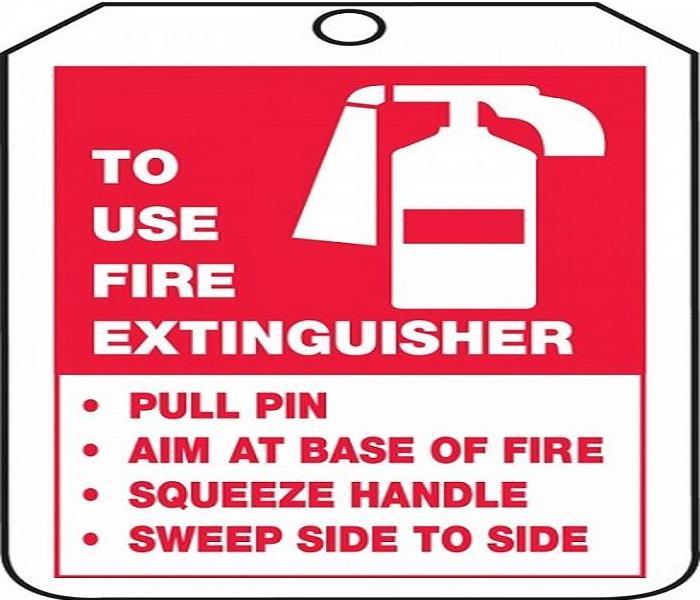Types of Fire Extinguisher
11/18/2019 (Permalink)
There are 5 main fire extinguisher types – Foam, Water, CO2, Dry Powder and Wet Chemical. To meet current regulations you should have the right type for your premises.
The fire risk from the class of fire will determine what type of fire extinguisher will be needed. You will also need to make sure you have the right size and weight. There are different versions of both the Water and Dry Powder fire extinguisher meaning there are 8 types to choose from.
- Water
- Water Mist
- Water Spray
- Foam
- Dry Powder – Standard
- Dry Powder – Specialist
- Carbon Dioxide (CO2)
- Wet Chemical
Water extinguishers are the most common type for Class A fire risk. They are used for Organic materials such as paper, cardboard, fabrics, textiles, wood and coal. They are not to be used on fires involving electrical, kitchen fires, flammable gas or liquids. Water extinguishers work by having a cooling effect on the fuel, causing it to burn much more slowly until the flames are eventually extinguished. Water spray extinguishers are equipped with a spray nozzle meaning a greater surface area can be covered more quickly. Water mist extinguishers release microscopic water particles. The particles suffocate the fire and create a wall of mist between the fire and the person using the extinguisher.
Foam extinguishers are most common for Class B fires but can work on Class A fires because they are water based. They can extinguish the same type of fires as the water extinguisher plus flammable liquids, like paint and petrol. They are not to be used on kitchen fires, fires involving electrical equipment nor flammable metals. Most buildings need either water or foam extinguishers.
Dry Powder extinguishers are also called ABC extinguishers because they can take care of Class A, B and C fires. They are not recommended in enclosed spaces due to the residue being difficult to clean up and easily inhaled. They are not recommended for use on fires involving cooking oil, electrical equipment over 1000v, in offices or residential properties. Specialist Dry Powder extinguishers are used only on flammable metals, such as titanium and magnesium. Dry Powder smothers a fire by forming a barrier between the fuel and the source of oxygen.
CO2 extinguishers are predominantly used for electrical fire risks and are usually the main fire extinguisher type provided in computer server rooms. They can also put out Class B fires involving flammable liquids such as paint and petroleum. They are not to be sued on kitchen fires, combustible materials like paper, wood or textiles nor flammable metals. CO2 extinguishers suffocate fires by displacing the oxygen the fire needs to burn. All work vehicles should carry a smaller 2kg CO2 extinguisher
Wet Chemical extinguishers are designed for use on Class F fires, involving cooking oils and fats. They can also be used on Class A fires. They are not to be used on flammable liquid or gas fires, electrical fires or flammable metals. Wet Chemical extinguishers work by creating a layer of foam on the surface of the burning oil or fat, preventing oxygen from fuelling the fire any further. The spray also has a cooling effect.
Be sure to place your fire extinguisher near the source of fire risk. Safety is first and being trained in proper use can reduce injuries. If the fire is out of control you need to use your evacuation plan. Close doors behind you and always pay attention.






 24/7 Emergency Service
24/7 Emergency Service
